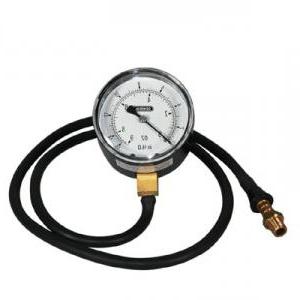Already in the ancient world, people suspected what the pressure of air and liquids really was. Some of the ideas about the atomic structure of matter came to us in the poem of Lucretius Cara "On the nature of things", and this is the period of antiquity, while the properties of pressure were effectively used already in Ancient Egypt. The priests using the heated and expanding gas "by magic" opened the doors of the temples, and the builders used a hydraulic lift for heavy stone blocks.
Today, the question of what pressure is as a physical quantity is answered: it is equal to the ratio of force to unit area. Therefore
, air pressure, liquid
pressure in a vessel and
pressure of a solid body on a support are similar phenomena. Since
force is involved in them
, pressure can be forced to do the work (which was used by enterprising ancient Egyptian priests).
With the pressure of a solid body on a support, in principle, everything is clear. Body weight is power, and it is divided by the area of contact of the body with the support. But in liquid and gas, particles are not at rest. All the time they make a movement, either chaotic Brownian or directional transfer due to the influence of external forces or internal conditions of the system. Pressure is generated by the impact of particles on the walls of the vessel.

The force that is involved in creating pressure in this case is the momentum that each particle gives out per unit time. Where does the impulse and force come from, we will understand if we recall the kinematics formulas describing the elastic collision of bodies. A molecule or atom of liquid and gas is considered as an elastic sphere. Inside the liquid and gaseous substances, particles constantly collide with each other, exchange energy and momentum. Therefore, pressure also exists not only with respect to the vessel wall, but also inside any substance.
Even inside the vacuum there is always a certain amount of particles that create a slight pressure in it. True, such a pressure in a vacuum exists, it was not immediately clear. Initially, it was believed that vacuum is an absolute void, and it creates zero pressure. School physics uses this assumption now.
Let's return to the movement of particles. It will help us understand what kinetic and static pressure is. When particles are in a chaotic thermal motion that is constant, static pressure arises. When any external action is applied to the system, and predominant directions arise in the movement of particles, these same particles begin to exert kinetic pressure.
Static pressure can be observed, for example, at the bottom of a bathtub filled with water. If you open the tap, the falling jet of water will create additional kinetic pressure. Simplified, it can be calculated on the basis of the same considerations as described above with respect to elastic particle collisions. The jet has a measurable speed and exchanges momentum with the bottom of the bath in a collision. The total pressure of the system (bath with water) will be equal to the sum of the static and kinetic pressures.